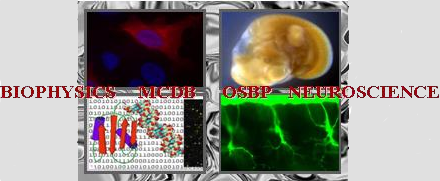Poster abstracts
Poster number 63 submitted by Meng Zhang
Dynamics and mechanism of cyclobutane pyrimidine dimer repair by Class II DNA photolyase and the role of Adenine in repair
Meng Zhang (Biophysics Graduate Program, The Ohio State University), Zheyun Liu (Department of Chemistry and Biochemistry, The Ohio State University), Shi Shu (Department of Chemistry and Biochemistry, The Ohio State University), Lijuan Wang (Department of Physics, The Ohio State University), Aziz Sancar (Department of Biochemistry and Biophysics, University of North Carolina School of Medicine), Dongping Zhong (Department of Physics, Department of Chemistry and Biochemistry, The Ohio State University)
Abstract:
Photolyase utilizes blue light to restore the major ultraviolet (UV)-induced DNA damage, the cyclobutane pyrimidine dimer (CPD) by splitting the cyclobutane ring. In our previous studies we resolved the complete repair photocycle by Class I photolyase with E. coli photolyase as a model system and concluded that the adenine moiety of the unusual bent flavin cofactor is essential to mediating the electron transfer between lumiflavin and CPD through a superexchange mechanism. Here we further studied CPD repair by Class II photolyase with femtosecond resolution and strikingly, we found that in Class II photolyase from Arabidopsis thaliana (AtCPD), the electron transfer adopts a direct two-step hopping process between lumiflavin and CPD bridged by adenine. The first-step hopping from the lumiflavin to adenine occurs in 560 ps, and the second-step hopping from the adenine moiety to substrates takes tens of picoseconds with a short distance of 3.1 Å. In photolyases from Drosophila, Methanosarcina mazei, and in the single-strand DNA photolyase from Arabidopsis thaliana, electron transfer from lumiflavin to adenine and to CPD have comparative probabilities and a mixed mechanism of electron tunneling and hopping was proposed. The cyclic intramolecular electron transfer between lumiflavin and adenine was observed in all photolyase, with a relatively fast backward ET ranging from 10 ps to 400 ps. The intrinsic cyclic ET in photolyases plays a critical role in mediating electron transfer in repair of damaged DNA through a superexchange or a two-step hopping mechanism.
Keywords: DNA repair, electron transfer, ultrafast spectroscopy
